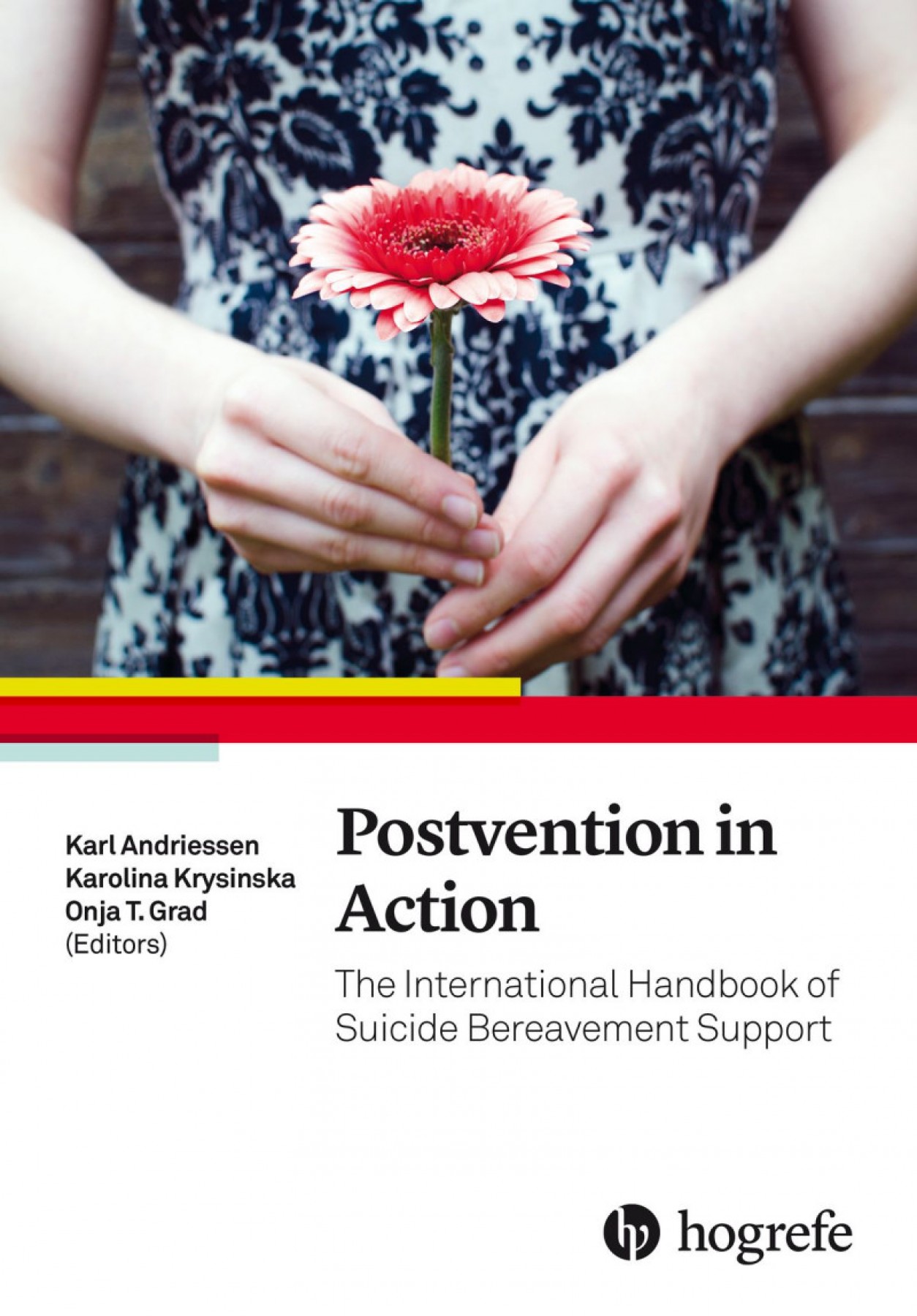Suicide postvention is the support of those left behind after a suicide. This approach was developed by Edwin Shneidman and Norman Farberow, pioneers of suicide prevention in America in the 1960s. I think they would be cheering for this book which carries on their work. It’s dedicated to Farberow and published on the 50th anniversary of Shneidman coining the term postvention.
A collection of writing edited by Karl Andriessen, Karolina Krysinska and Onja T. Grad, contemporary leaders in postvention and suicide bereavement research, it’s satisfyingly solid from an academic perspective, yet very readable, uniting thought and research with a heart that brings balance, warmth and understanding, a perspective that invites a reader into wanting to know more.
Contributors are researchers and clinicians, also leaders and experts in postvention. Topics covered include current demographic and clinical issues, coronial processes, mental health, support groups, support for youth, therapy, counselling, online support, indigenous healing practices, spirituality, cluster suicides, murder-suicides and development of postvention guidelines.
With 47 chapters, it’s a big read. As each chapter stands alone, these can be read in any order or as suits. There’s a structured flow to the text, with readings grouped thematically. Part 1 looks at current knowledge and what this implies for support. Part 2 covers suicide bereavement support in different settings, while parts 3 and 4 look at different populations and countries. New Zealand is located in the Asia- Pacific section and is represented by Dr Jemaima Tiatia-Seath, who writes on her work to develop postvention guidelines for Pacific communities. Her approach involves keeping voices of Pasifika suicide bereaved central, allowing communities to identify their own issues and ways forward.
From a work perspective, I find this book valuable. It’s informative and inspiring, it discusses what’s possible, what works and why, while noting limitations and sizable gaps in the research. It prompts action. On a personal level, as someone bereaved by suicide, I find it validating and reassuring to be able to dip into a book like this and learn that my experiences matter, while finding out more about current research and initiatives in suicide bereavement and postvention.
As observed in the book’s foreword, in former times: “There were usually only veiled references to suicide, let alone any suggestion that those who were bereaved through suicide should be considered worthy of study or indeed support.”
Yet as Andriessen goes on to explain in the preface, citing the World Health Organisation (2014): “Every year, more than 800,000 people die of suicide; that is one suicide every 40 seconds… given that suicide bereavement is a risk factor for adverse mental health outcomes and suicidal behaviour, there is a need for adequate suicide bereavement support… (this is) recognised by the WHO as an important strategy for suicide prevention… interventions should be offered to grieving individuals and national suicide prevention objectives should include support for the bereaved by suicide."
I would add that even for those who are seemingly well-adjusted, showing “resiliency” in the aftermath of a death by suicide, the specific nature of suicide bereavement requires active forms of compassion and support for all affected.
This book holds a wealth of information that supports goals related to developing effective postvention supports. Andriessen also points out that bereaved are vital in supporting these goals: “Suicidology and suicide prevention without the active involvement of survivors would be poor suicidology. Postvention is prevention. Postvention is action.”
Policy-makers, researchers, clinicians, people working in this area, bereaved, counsellors, students, those simply wanting to learn more – use this book, read it, dip in and out as you need to. It inspires. It educates. It leads. It’s terrific.
Reviewed by Virginia Brooks, Community Engagement & Health Promotion Officer at the Mental Health Foundation

